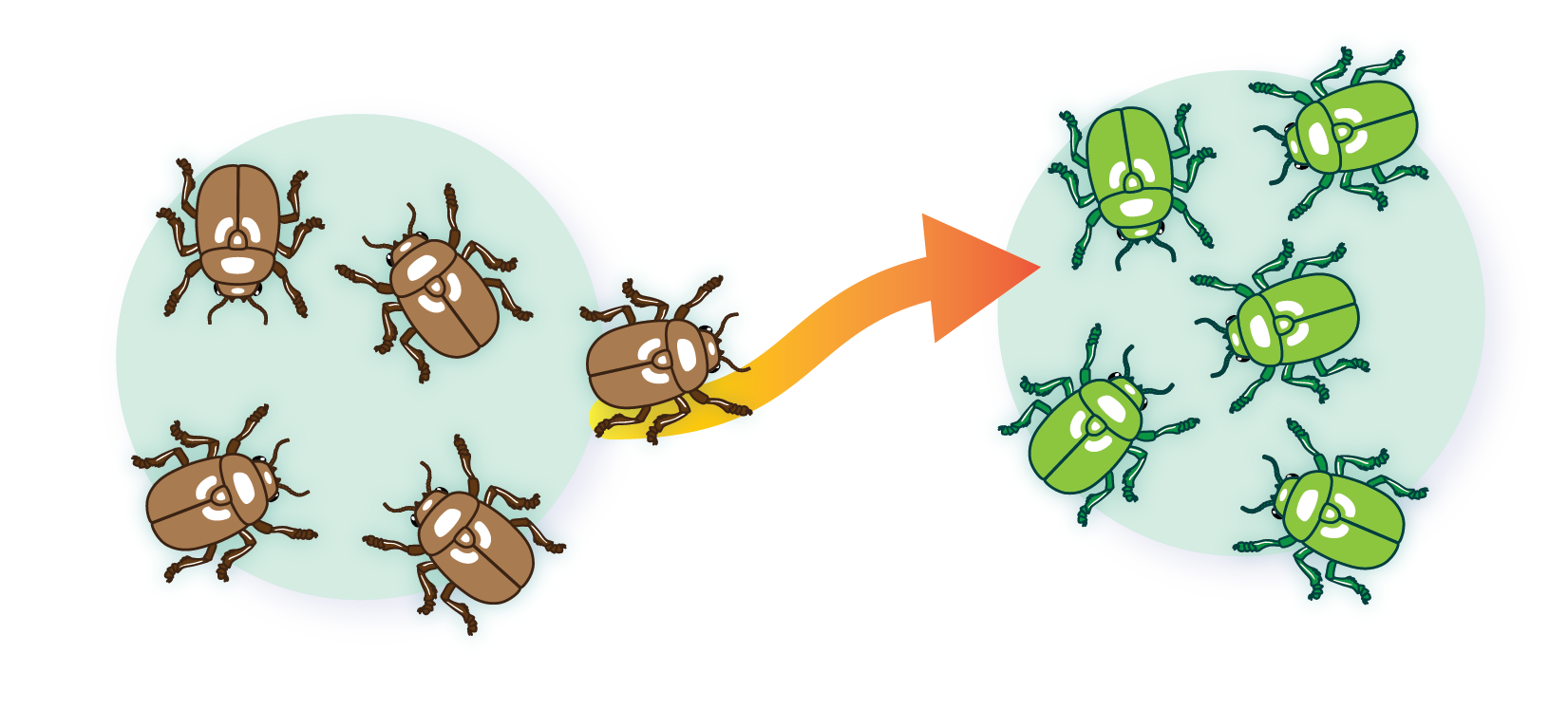2.11 Mechanisms of Evolution: Migration
What is migration?
Migration, also called gene flow, occurs when individuals move between populations (Figure 2.14). When this happens, the gene variants within the migrating individuals move to the new population. The migrants are likely to make their new population more diverse through the introduction of new gene variants. The original population may become less diverse (i.e. have less variation) as a result of losing one or more of its individuals, or variation may stay the same.

Example: Gene flow from Denisovans to the ancestors of modern Tibetans
There are many examples of populations evolving through migration. An appreciation of gene flow can help us understand adaptation to high-altitude conditions. For example, researchers recently discovered that gene flow between populations contributed to evolution within populations of humans in Tibet. Denisovans were a population of ancient humans that is sometimes referred to as a subspecies of Homo sapiens (our species). Fossilized remains of Denisovan individuals were first discovered in 2010 in Central Asia. DNA analysis has shown that some gene variants found in Denisovans are also found in many modern-day Tibetan people. This suggests gene flow from Denisovians into a Homo sapiens population. These gene variants seem to produce traits that are beneficial in high-altitude conditions. This is an exciting new area of research and we can expect more information in the coming years.
Check Yourself
Content on this page was originally published in The Evolution and Biology of Sex by Sehoya Cotner & Deena Wassenberg and has been expanded and updated by Katherine Furniss & Sarah Hammarlund in compliance with the original CC-BY-NC 4.0 license.
- Image from UC Museum of Paleontology Understanding Evolution, www.understandingevolution.org under a CC-BY-NC-SA 4.0 license. ↵

